I’m the first to admit: I’m a bad millennial. I’ve stubbornly clung to my old-school pen-and-paper sensibilities, including in my classroom. Don’t get me wrong, I incorporated technology into lessons, but I didn’t give a lot of thought to really harnessing its power until the last year or so. Now I’m all in. Here’s what I’ve learned about using social media as a tool to grow your drama program outside the classroom and make what happens inside the classroom come to life in a new way.
It’s All About the Culture
When I took over a small high school drama program, one of the things I wanted to do was build a culture to help grow our numbers and our public profile. Social media became one of the most effective ways to do that. I decided to try treating our program like a theatre company; I used Canva to create a logo and set up Facebook and Instagram accounts to start building our brand. We use Instagram stories to create weekly posts like “Fun Facts Friday” or “Wacky Wednesdays”. The best way to make these types of posts successful is finding organic opportunities for audience engagement-and Instagram has plenty of tools to make that easy. I use the Q&A and polls features pretty often on stories to get viewers to interact with us.
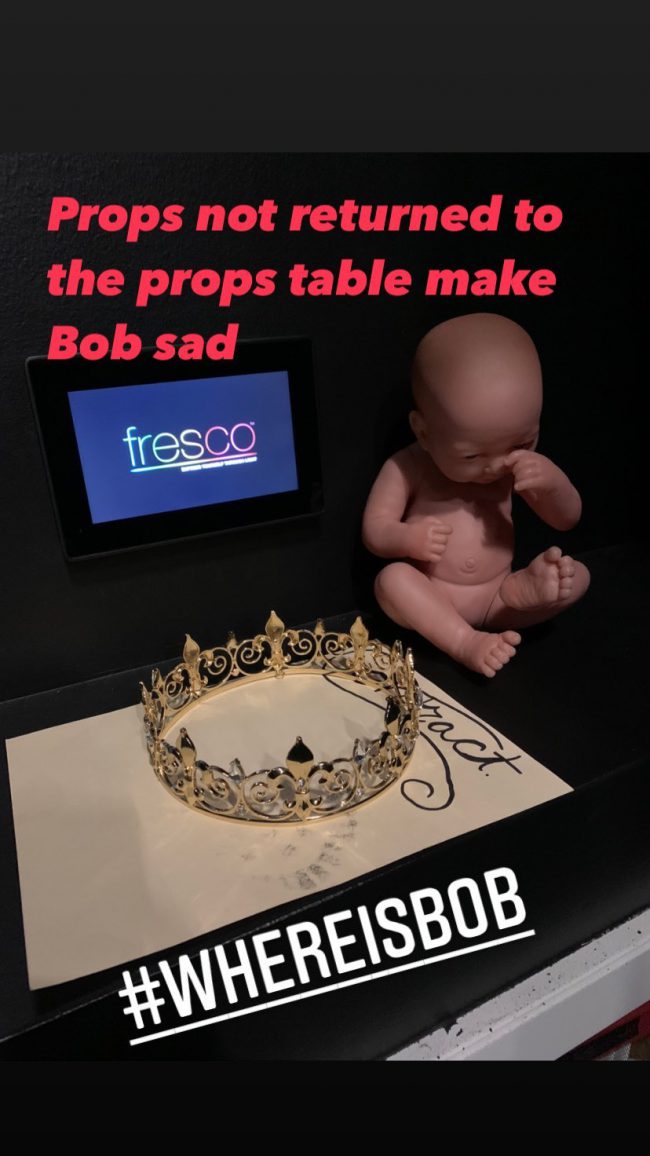
The key is having fun and letting your and the students’ personalities shine through. When we used a plastic baby doll for our production of Don Zolidis’ very funny The Brothers Grimm Spectaculathon, the baby wound up being our program mascot. We gave him an official name – Bob – and incorporated him into some of our social media posts. In the lead-up to opening night for the play, we did a daily “Where’s Bob?” Instagram story where we put Bob in obscure places throughout the theatre and had viewers guess where it was. Bob is also a great teacher-when actors forget to return their props to the props table, he’s been known to snap a sad selfie to gently call out the offender. Or an angry one, depending on his mood. When Bob sadly disappeared, he was replaced with Stickie, who now has a shrine in my classroom.
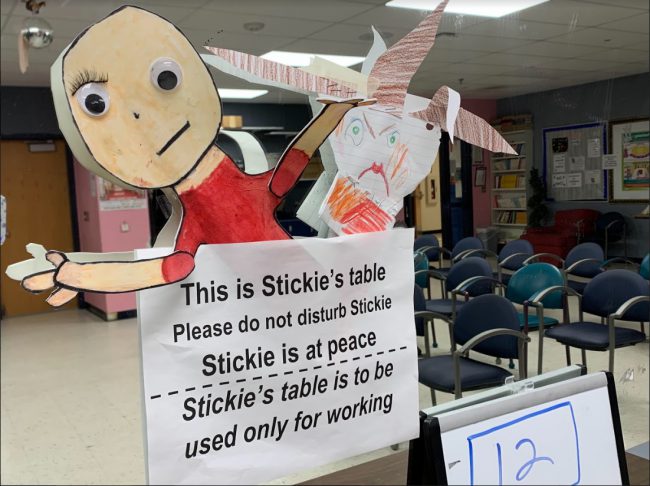
ABP: Always Be Posting
As with any social media channel, consistency is key. It’s important to stay active with regular posts, but that can be challenging during the “downtimes” when there isn’t a show going on. I’ve played around with a few different ways to keep our social media channels continuously active with engaging content that isn’t just “filler”. You could highlight folks who might not otherwise get a shoutout but who play an important part in helping your program. Last year we did a series of posts about the janitorial staff that helps keep our theatre clean and the maintenance crew that fixes stuff.
We also use snow days and breaks to our advantage. I happen to have a picture of the outside of our theatre building taken after a big snowstorm. On our last snow day, I used the picture to do an Instagram story about a “mysterious visitor” that had shown up to the theatre (a Yeti).
Give Students A Voice
Like many other teachers, I delegated the running of our social media accounts to students. We created the position of publicist in our drama club and assigned that person to create and post content. They work in conjunction with me to plan posts and I approve everything, but they are in charge of creating and posting content. Turning over creative agency to my students has not only taken it off my plate, it’s led to a much higher level of investment in drama because students genuinely feel like an active contributor to the program.
Team Up
An unexpected benefit that social media offered our program was access to community partners and sponsorships. When a popular local coffee shop came under new management, the new owners reached out about doing a give-back day where our program would get a percentage of any sale if the customer mentioned us. We promoted the event on our respective social media accounts and both our program and the shop got some advertising. Don’t be afraid to reach out to area businesses on social media to ask about mutually beneficial partnerships.
In the Classroom
Social media doesn’t just help build your program’s profile-it has some great applications for class lessons as well. When we read A Doll’s House, students created a blog for both Nora and Torvold and wrote posts as the characters. Another lesson that I “borrowed” from an English teacher had students research a specific theatre practitioner like Sanford Meisner or Stella Adler and create a Facebook profile as that person. Students could then comment on each others’ pages as their practitioner, throwing some shade and “debating” the value of their method. The Meisner/Stanislavski Facebook War of 2021 is still legendary.
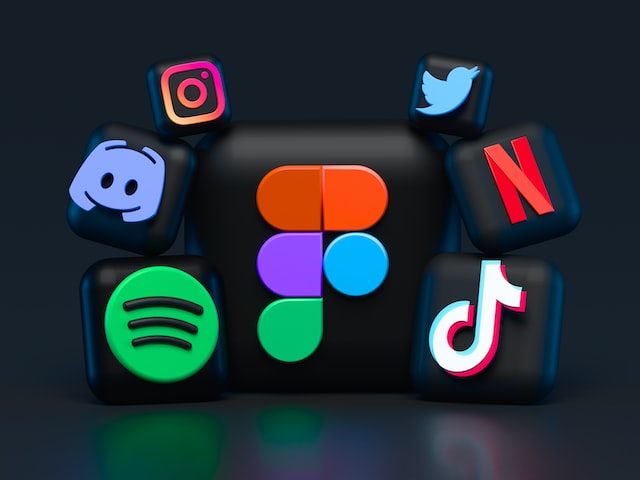
[Photo by Alexander Shatoy on Unsplash]
If you don’t want to create an actual profile or students don’t have access to the technology required, there are some blank templates for Facebook, Twitter, and Instagram profiles online.
My Favorite Apps
Classcraft: this app essentially turns classroom management into a game, with learning quests and interactive tools to help engage students and build positive collaboration in the classroom. As a drama teacher, I’ve found it really effective and a fun way to keep students motivated. There’s a basic version available for free at classcraft.com
Buffer: this one isn’t specific to educational use, but it’s a good “one-stop-shop” for managing your social media content. There’s a calendar for scheduling posts and the app integrates with Instagram, TikTok, and others for automatic posting and post management. The free version works with up to three social media channels with a more feature-rich paid version available starting at $5. The analytics tools are also helpful in tracking post engagement and how people are finding your content.
Flipgrid: This popular app has several applications in the drama classroom. I use it as an option for students to start getting comfortable with performance and feedback. They record a monologue and then watch everyone else’s recordings to provide feedback. Using Flipgrid makes presenting a monologue more comfortable for students who are still anxious about performing in front of people because they can record multiple takes in a private space. Students can then watch the monologues and provide feedback on their own time. Being able to watch each others’ monologues multiple times and think through their feedback takes the pressure off and leads to more insightful and detailed feedback.
Shakespeare’s Globe 360: This one’s a must-have for anyone who teaches Shakespeare. From the Globe Theatre, the app offers 360 degree views of the Globe Theatre. Students can explore the theatre up close and personal from on stage, backstage, the musician’s gallery, and other locations. As students look around, they can click on different icons for historical information about Shakespeare and the Globe. It’s available for free online or on the Apple App Store.
This of course is just a small sample of apps out there that can be used in the drama classroom. I’d love to hear about some of your favorites!



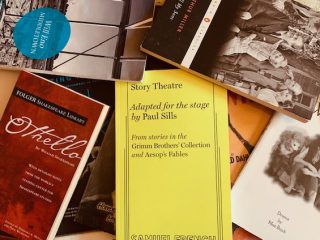
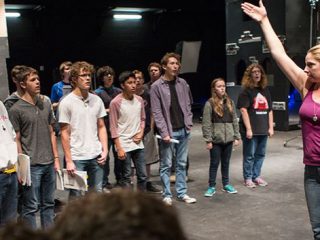
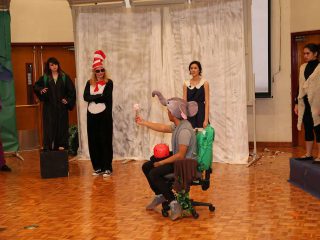

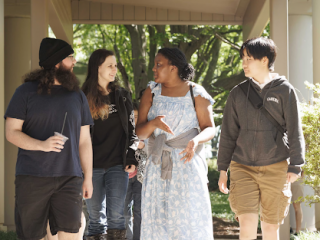


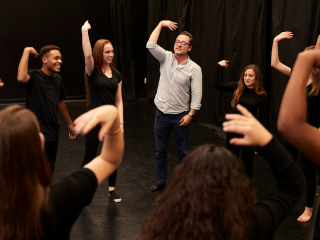




1 comment
How do you handle keeping the kids safe on social media? Do you have guidelines and parent permissions? Do the kids have access to these accounts outside of school?